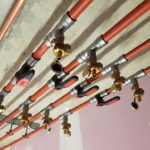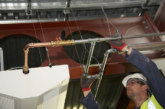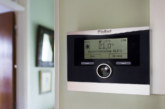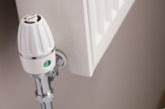Phill Jackson from Pegler Yorkshire explains how best practice and knowledge of all system elements are imperative to the success of the next generation heating networks.
The demand and desire for alternative ways of heating properties continues to gather pace and, with the Government stating in the recent Spring Statement that fossil fuels such as gas will no longer be able to be utilised in new homes from 2025, alternative ways to provide heating and hot water have never been more important. To that end technological advancements in this area are moving along at a pace perhaps not seen before, with local authorities pivotal in the shift towards embracing new technologies that drive cost and energy savings.
Renewable heating systems, especially those connected to district heating are entirely appropriate when it comes to multi-occupancy dwellings or developments. Complex, yet delivering great efficiencies, such systems work by having a Central Energy System that then distributes heat to a property or number of buildings, and where individual control can be enjoyed by occupants.
In order to maximise these efficiencies and gain optimum results from such systems, it is vital that the technology of the interface unit that provides individual unit control, is completely supported by an integrated valve and pipe system that can optimise the heat generated and the way in which it is managed.
What specifiers need to know
Pegler is driving forward the technology to support this surge in alternative heating systems. We are also ensuring the workforce that commission, install, manage and maintain these systems have the necessary skills to ensure systems reach their full potential and clearly understand how valve technology bolsters Heat Interface Units (HIUs) and Heat Distribution Networks to deliver environmental and cost saving efficiencies.
The Heat Distribution, Metering and Control CPD module from Pegler covers system types, applications, influences and climate solutions, particularly focusing on HIUs, the benefits they can bring and how our technologies support this. The CPD module has gained accreditation from the Chartered Institute of Building Services Engineers (CIBSE) for its industry relevance, giving those that choose this training method complete confidence in the knowledge that they will gain and how they can apply it.
Encouraging best practice
To encourage best practice across the industry and to ensure that knowledge concerning the modern approach to Centralised Energy Centres is fully explained, the CPD module assists in explaining how improved energy efficiencies can be realised through the specification of central plant solutions. By choosing to install such systems in existing or new developments, a number of short and long-terms benefits can be realised.
In the short-term, SAP ratings can be improved as central plant solutions meet Part L of Building Regulations, local authorities who are under pressure to develop housing can see improved successes within the planning process and a waste-to-heat energy usage opportunity is also presented.
In the long-term, local authorities can potentially access funding to create feasibility studies on heat networks and also capitalise on incentive schemes that support renewable energy’s such as Air Source Heat Pumps, Biomass, Ground Source Heat Pumps and Solar Thermal.
Maximising efficiencies
Efficiencies of such systems can be maximised in a number of ways but particularly through the specification of integrated piping systems, correct valve specification and the monitoring of systems through heat and energy meters. Control is perhaps the key to ensuring these efficiencies are realised on a day-to-day basis. By ensuring the correct individual and system controls are in place, accurate measuring of energy consumption can be monitored, thereby supporting facility managers who are generally expecting such technologies in modern systems as a standard part of the specification process.
Efficiencies are not just realised in consumer and maintenance terms; the installation of the system valves, pipes and fittings can also benefit from metal push-fit technology, which will reduce installation costs and times. This will help deliver the quality assurance that such systems are renowned for. Central Energy Centres, particularly those supported by renewable fuel sources, are unquestionably the way that local authorities should go when specifying heating and hot water systems in new multi-occupancy dwellings and developments.
And, with companies like Pegler committed to developing technologies to support this, maximising system efficiencies and creating safe, cost and time efficient installations will become an easier task for local authorities.
Reinforced with comprehensive CPD modules to educate installers and specifiers to fully understand the options available and the benefits that can be enjoyed, Pegler will continue to support the infrastructure and system maintenance through its advanced technologies from brands across the Aalberts Group. The future for change in the way heat is generated, distributed and monitored is exciting.
Phill Jackson is Marketing & Business Development Director at Pegler Yorkshire Group






